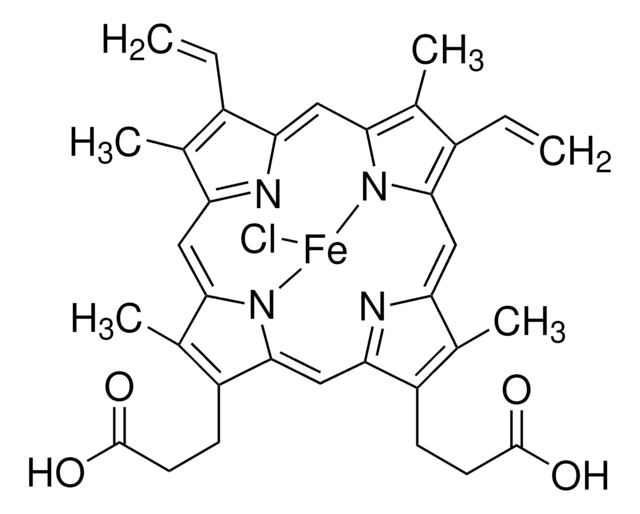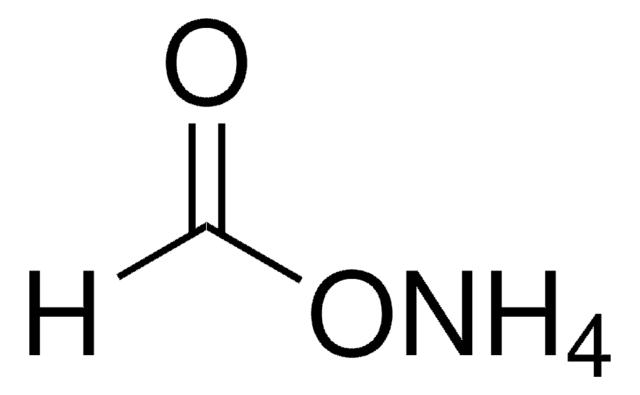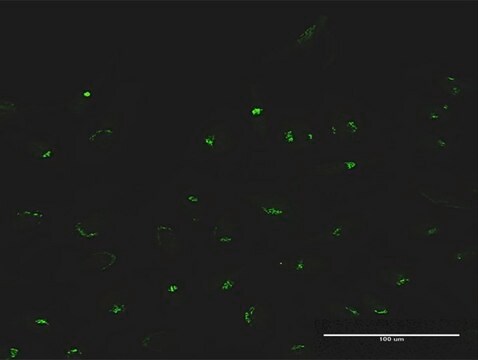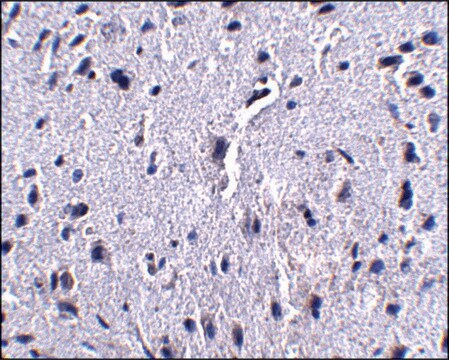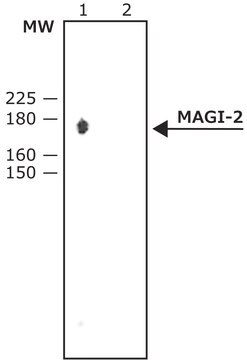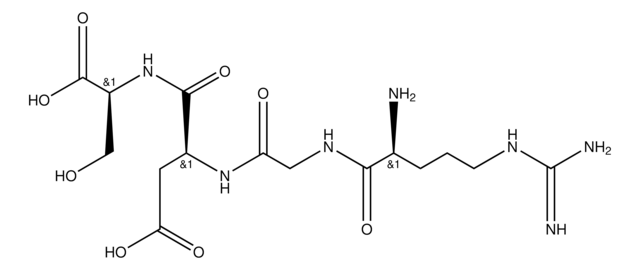推荐产品
生物源
rabbit
品質等級
共軛
unconjugated
抗體表格
affinity isolated antibody
抗體產品種類
primary antibodies
無性繁殖
polyclonal
形狀
buffered aqueous solution
分子量
antigen ~73 kDa
物種活性
human, rat, mouse
技術
indirect immunofluorescence: 5-10 μg/mL using human HepG2 cells or rat NRK cells
western blot (chemiluminescent): 0.5-1 μg/mL using whole extract of mouse NIH3T3 cells
UniProt登錄號
運輸包裝
dry ice
儲存溫度
−20°C
目標翻譯後修改
unmodified
基因資訊
human ... MAN1A1(4121)
mouse ... Man1a(17155)
rat ... Man1a1(294410)
一般說明
α1,2-Mannosidase IA is a type II transmembrane Golgi-resident enzyme that belongs to class I α1,2-Mannosidases (glycosylhydrolase family 47). The highly conserved Class I α1,2-Mannosidases classified into three subgroups according to their enzymatic activities. α1,2-Mannosidase IA is predominantly detected in the juxtanuclear Golgi region. The three subgroups differ in their expression pattern, subcellular localization, and substrate specificity.
免疫原
synthetic peptide corresponding to amino acids 138-154 of human α1,2-mannosidase IA with N-terminal added cysteine, conjugated to KLH. The corresponding sequence is identical in mouse.
應用
Anti-α1,2-Mannosidase IA antibody produced in rabbit has been used in:
- immunohistochemistry
- immunoblotting
- immunofluorescence
生化/生理作用
α1,2-Mannosidase IA belongs to the first subgroup out of the three subgroups of class I α1,2-Mannosidases. The first subgroup consists of yeast and human α 1,2-mannosidases of the endoplasmic reticulum that convert Man9GlcNAc2 to Man8GlcNAc2 isomer B. The second subgroup comprising of mammalian Golgi α1,2-Mannosidases IA, IB, and IC cleave Man9GlcNAc2 to Man5GlcNAc2 via Man8GlcNAc2 isomer A and C. The third subgroup of yeast and mammalian proteins do not show any activity on Man9GlcNAc2. Proteins from subgroup 1 and 3 have been implicated in ER quality control and in proteasomal degradation of misfolded glycoproteins. The Golgi mannosidases from the second subgroup may play a role in the ERAD (endoplasmic reticulum-associated degradation) of defective glycoproteins. The three subgroups have been found to pariticipate in the maturation of Asn-linked glycoproteins in the endoplasmic reticulum (ER) and Golgi complex.
外觀
Solution in 0.01 M phosphate buffered saline containing 1% bovine serum albumin and 15 mM sodium azide.
免責聲明
Unless otherwise stated in our catalog or other company documentation accompanying the product(s), our products are intended for research use only and are not to be used for any other purpose, which includes but is not limited to, unauthorized commercial uses, in vitro diagnostic uses, ex vivo or in vivo therapeutic uses or any type of consumption or application to humans or animals.
未找到合适的产品?
试试我们的产品选型工具.
儲存類別代碼
10 - Combustible liquids
水污染物質分類(WGK)
WGK 3
閃點(°F)
Not applicable
閃點(°C)
Not applicable
Identification of cholinergic chemosensory cells in mouse tracheal and laryngeal glandular ducts
Krasteva-Christ G, et al.
International Immunopharmacology, 29(1), 158-165 (2015)
O-GlcNAcylation mediates metastasis of cholangiocarcinoma through FOXO3 and MAN1A1
Phoomak C, et al.
Oncogene, 37(42), 5648-5648 (2018)
A Herscovics
Biochimie, 83(8), 757-762 (2001-09-01)
Class I alpha 1,2-mannosidases (glycosylhydrolase family 47) are conserved through eukaryotic evolution. This protein family comprises three subgroups distinguished by their enzymatic properties. The first subgroup includes yeast (Saccharomyces cerevisiae) and human alpha 1,2-mannosidases of the endoplasmic reticulum that primarily
Yuri D Lobsanov et al.
The Journal of biological chemistry, 277(7), 5620-5630 (2001-11-21)
Class I alpha1,2-mannosidases (glycosylhydrolase family 47) are key enzymes in the maturation of N-glycans. This protein family includes two distinct enzymatically active subgroups. Subgroup 1 includes the yeast and human endoplasmic reticulum (ER) alpha1,2-mannosidases that primarily trim Man(9)GlcNAc(2) to Man(8)GlcNAc(2)
Jie Li et al.
Molecular biology of the cell, 30(4), 478-490 (2018-12-20)
In mammalian cells, the Golgi reassembly stacking protein of 65 kDa (GRASP65) has been implicated in both Golgi stacking and ribbon linking by forming trans-oligomers. To better understand its function and regulation, we used biochemical methods to identify the DnaJ
我们的科学家团队拥有各种研究领域经验,包括生命科学、材料科学、化学合成、色谱、分析及许多其他领域.
联系技术服务部门